
The truth about living on a boat – by two liveaboard kids
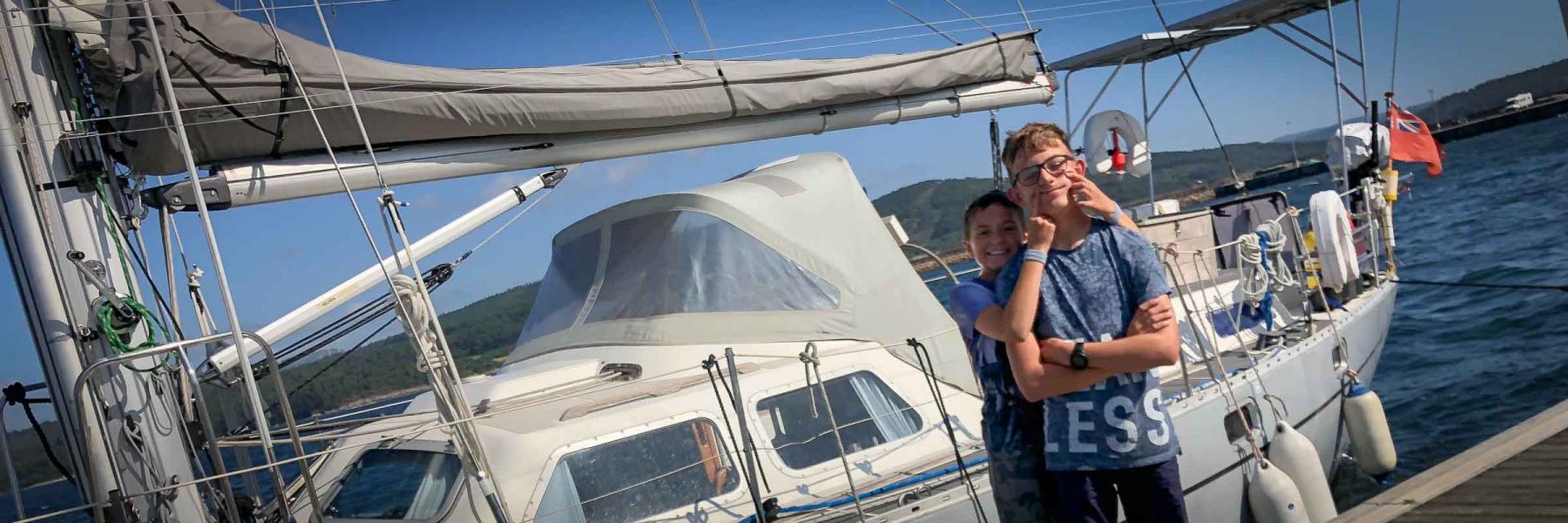
Many people dream of sailing away and living on a boat in faraway tropical destinations with tall palm trees and white sand beaches, swimming in crystal clear, turquoise seas surrounded by turtles and dolphins, and drinking copious amounts of rum while watching the sun set below the horizon. But what is it really like to live on a boat full time? What are the pros and cons of liveaboard life at anchor? How does living on a boat differ from living in a house on land? Cooking, washing, laundry, sleeping, getting around? What do the kids think about doing chores on a boat?
Our family, including our two kids aged 12 and 14, are living aboard our sailing boat, Fat Susan, and have travelled from the UK to the Caribbean. It is a fantastic way of life. But on our boat, daily life and chores can be very different to living in a house. It’s easy to forget how cramped it can be, how uncomfortable the solid, triangular beds can be, how annoying the fish can be when they nibble on the hull next to your head all night, how grim the smell of the marine toilet is, how steep the companion way steps are….
We’ve had a few visitors on our boat since we left home. It’s not until you are visited by someone who has no desire to live on a boat, that you realise the differences between boats and houses.
I spoke to Nanna after she flew home from the Canary Islands, back in her lovely house in Wales. She spent a few weeks with us and loved living on the boat on a marina pontoon, but told me all about the long hot bath she had when she got home, how comfortable her bed was and how she sat in her bed this morning with a cup of tea, watching her television. Our friend Eleanor joined us onboard while we sailed across the Atlantic Ocean. She coped amazingly well with the constantly rolling boat out at sea, but was quite pleased to be cooking at home in a kitchen that didn’t roll violently from side to side.
I wouldn’t change how we live but, for those who don’t know, these are some of the differences between living on a tiny boat and living in a nice spacious modern house. The boys were washing up the breakfast dishes this morning and reminiscing about our dishwasher at home, and we got to thinking about the differences between our house and our boat. So I asked them to write down some thoughts.
The rest of this post is written by the kids, Sam (aged 14) and Evan (aged 12). The pros and cons of living on a boat, at anchor, and particularly doing chores on a boat, from the eyes of two liveaboard kids….
Over to the kids…..
Contents
What is it like being a liveaboard kid on a boat at anchor?
Whilst washing up this morning we thought about the differences in a house and on a boat. So we’re going to give you an insight into what it’s like to live on Fat Susan. Fat Susan is a 43 foot (13m), 30 year old monohull sailing boat, built in the UK.
The boat galley
The kitchen or galley on our boat is very small. We have a boat rule which states that only one person at a time is allowed in the galley to cook There just isn’t enough room. The cook cooks and everyone else stays out. Nobody can get to the fridge if someone else is in the galley. Nobody can get past into the aft cabin if someone else is in the galley.
Cooking on a boat
Cooking here is very different from home. At home you simply grabbed food out of the freezer and put it in the oven.
Here on the boat, we don’t have a freezer and the fridge is tiny and triangular in shape, so it is difficult to pack. We have a very small and dodgy gas oven that likes to turn itself off randomly. My mum has named the oven ‘Arkwright’. I think this is an old person reference. It keeps turning itself off for no reason and swinging everywhere and slamming shut in big seas for no reason. It’s slightly scary and also dangerous if you’re not paying attention, whilst also being immensely useful.
Mum says – The boat oven’s name comes from the the British Sitcom ‘Open All Hours” from the 1970s and 80s. Arkwright’s till / cash register was very much like our oven. This compilation on YouTube sums up our boat oven.

Arkwight the Oven. He’s gimballed so that the hob is always level and the pans don’t fall off in rolly seas.
At home we had a freezer and that means that we could eat stuff like chicken nuggets and chips or frozen pizza. Here on the boat, as I said, we only have a minuscule fridge and that means we have to make this sort of meal from scratch. To make chicken nuggets, we have to buy chicken, make breadcrumbs, roll the chicken in egg and then breadcrumbs before we can cook it. To make pizza, we have to make the dough in the morning, wait for hours for it to rise, knead it, wait for it to rise again and flatten it into a rough pizza base. Then we can put on the toppings and then cook it in the dodgy oven.
Another major issue about the freezer is storage. In our house we could use the freezer to keep food for weeks on end but now, as we don’t have one, we have to go to the shop most days. This often means a dinghy ride and a bus ride and lots of carrying. Also, our fridge is really small so we can only have a handful of things in there at a time.
Washing dishes on the boat
At home we had a dishwasher and every day we would fill it up, press the button and come back two hours later to spotless dishes that we just had to put away and it was finished. We complained about having to empty the dishwasher. That seems a bit silly now. Washing dishes while living on a boat is a bit more complicated. We have to manually fill the sinks with hand pumps, wash up in salt water, rinse off in a little bit of fresh water, dry it straight away and then put it away, before it all falls over. The water in the sink has to be flushed away using a foot pump. I would also like to point out that there is a piece of wood at eye level above the sinks so you have to bend yourself into a really strange shape in order to see the sinks. Also, the galley is only big enough for one person at a time, unless you are washing up and then you can have one washing and one drying.
Sleeping on a boat
Before we started living on a boat, we lived in a four bedroomed house. The bedrooms weren’t that small either. On the boat however, the bedrooms are quite small and full of stuff that doesn’t fit anywhere else. I (Evan) can, whilst lying down in my bed, touch Sam’s bed with my hand. There isn’t much storage room either. I only have one tiny cupboard and a small drawer for all my clothes.
Another object of discussion is privacy. Between me and Sam there are only two thin curtains. When we’re sailing it’s really hard to go into my room because of the constant bouncing up and down the waves. As well as this, when we have extra crew they steal Sam’s bed and he sleeps in the passage bunk above me. This disables my freedom of movement in my bed. I can’t even put my knees up as the bunk above is so close to mine. It’s a bit like being in a coffin!
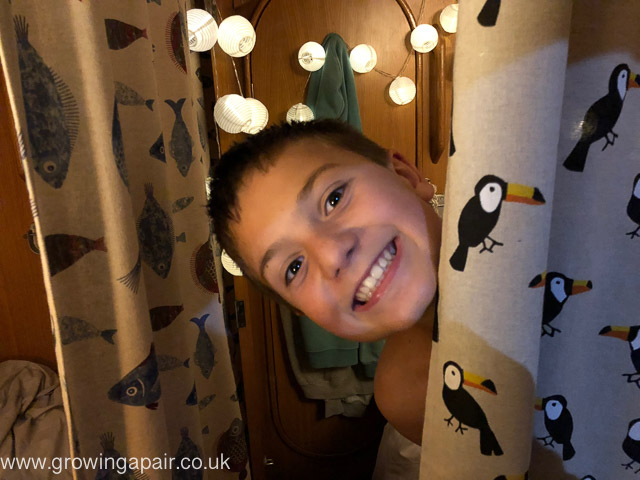
The boys cabin is cosy. The curtains between their beds give them a bit of privacy and the feeling of having their own space.
Laundry on a boat
The main difference with washing clothes on a boat is the apparatus. In a normal house you should find a washing machine and a perhaps a tumble dryer. On our boat, you will find two buckets and a clothes line on the back. We used to have a plunger for the washing bucket but now we just use nature’s walkamobiles, our feet.
First you need to fill your bucket up with salt water and soap. Pretend you’re in a marching band and walk on the spot until the water is lovely and brown. Wring out the washing into the second bucket. Empty the first and fill up the second, using a bucket on a rope from the sea. Repeat this a few times and on the last rinse use fresh water. Wring the clothes out, hang them up and let them dry in the salty breeze. This can also be useful because in doing this you use the washing water to clean the cockpit too. If we can, we will go into town and go to a laundrette as it is easier, but that isn’t always possible and often involves a long walk.
The toilet – a.k.a. the heads
Then we have the toilet, another case of doing things manually where at home it’s just push a button. You have to hand pump the waste out and the sea water in to flush the boat toilet. You can’t use it in marinas and also the ceiling is too low for me (Sam) to stand up, so I have to hunch over.
We do have a shower on the boat but we don’t use it. Speaking of showers I haven’t had a fresh water shower in a month. That doesn’t mean that I haven’t had a shower. We have salt water showers. They involve jumping off the boat, getting soap on, jumping off the boat again and towelling off immediately so the salt doesn’t stick to you. We are all craving the simplicity of a hot water shower though and are looking forward to a clean, warm shower when we next find one.
The family car – our inflatable dinghy “The Gapster”
At home we had two cars. On our boat, we have one ‘car’ and it is very different to the cars we had at home. To start off, it only has a 3.5 horsepower engine and moves slightly slower than jogging pace. Due to the slow speed, if you try to use it in high winds you may well float away. It is immensely useful and has two redeeming qualities; it floats and most importantly can be driven by me (Sam). That’s right a teenager drives our family car. T’is the best way.
If living on a boat is so difficult, why do we do it?
Living on a boat is difficult, however it is quite possibly the most amazing experience of my life. We experience lots of new countries, we meet locals, we meet lots of other boat kids, we snorkel and scuba dive, we explore deserted islands and meet other sailors from just about everywhere. There is always something to do and learn. There are experiences while living and travelling on a boat that you simply won’t find anywhere else. Such splendid experiences are worth the hardships.
You can follow our Growing a Pair instagram page to see more of the good stuff about living on a boat.
Living on a boat has it’s pros and cons but in truth it’s amazing. Sure, we don’t have the conveniences of being on land at home but that’s ok as we are in the Caribbean and it has all been worth it to get here. Now I think I’ll go for a swim…

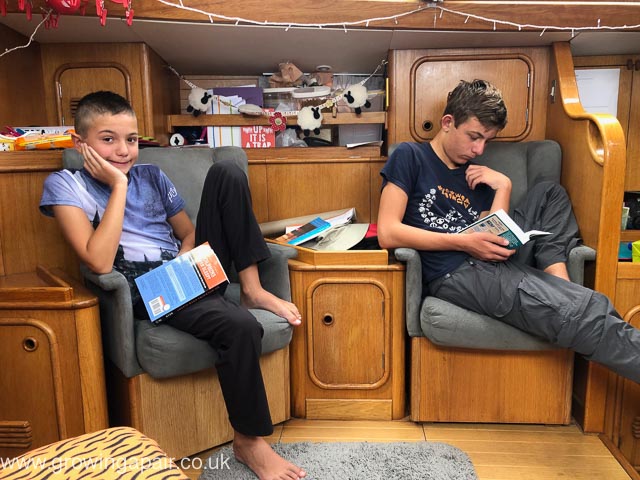
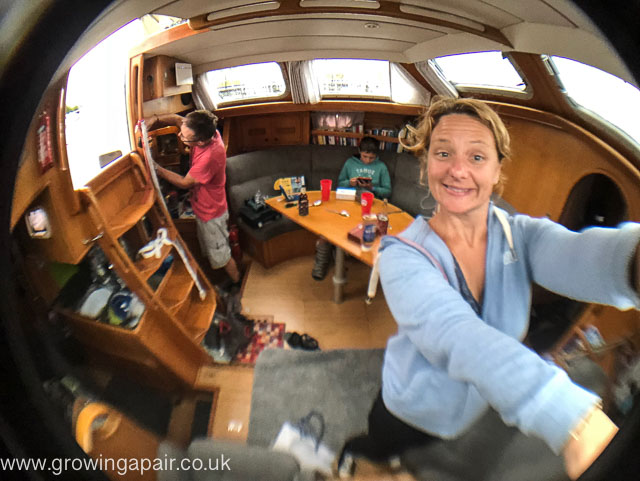
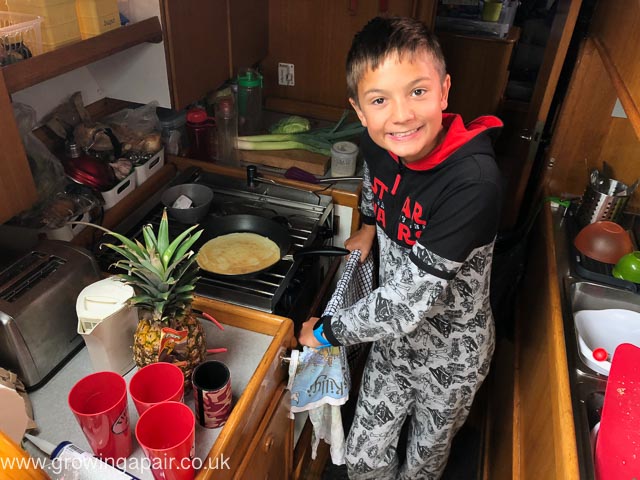

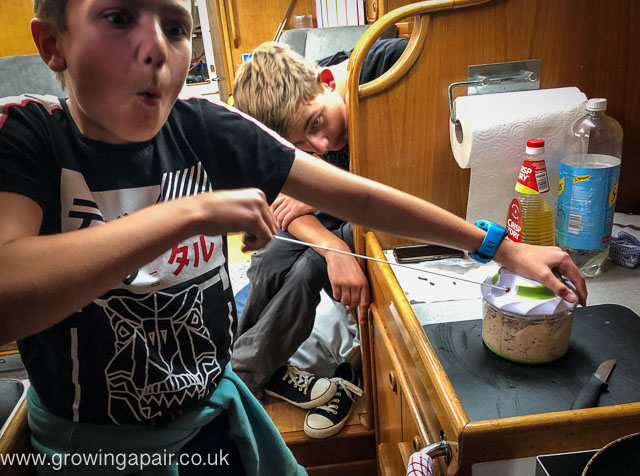
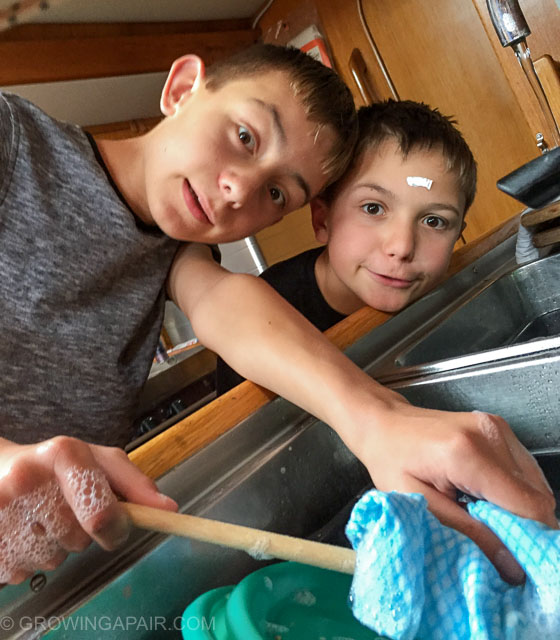
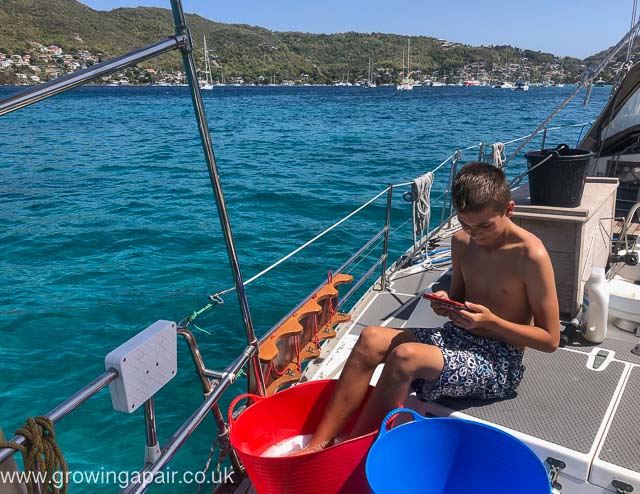
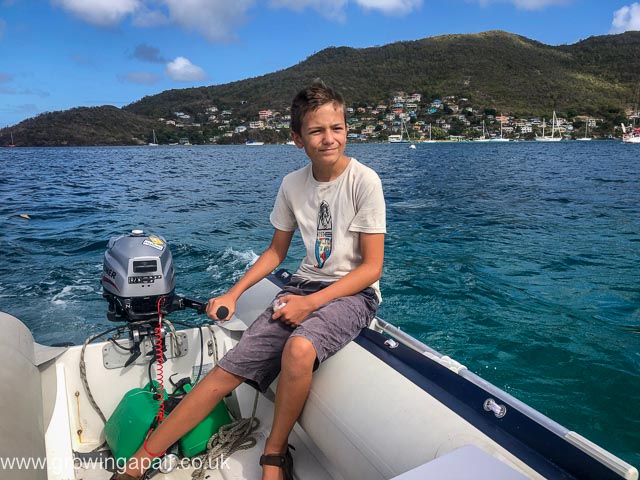
Enjoyed reading this boys, well done. Xxx
Love the bit about the cooker turning itself off, we had the same issue with our sailing boat! Very frustrating, turned out to be the regulator and the thermocouples, fortunately covered under warranty though.
Amazing to hear about all your travels and experiences, sounds perfect living on a boat!
If you decide to spend a year living on a yacht, you can rent or purchase a 50-foot yacht. While 40 to 50ft yachts are sold for an average of $329,000, their rental prices fluctuate between $10,000 and $20,000 per week, depending on the yacht’s size and facilities.